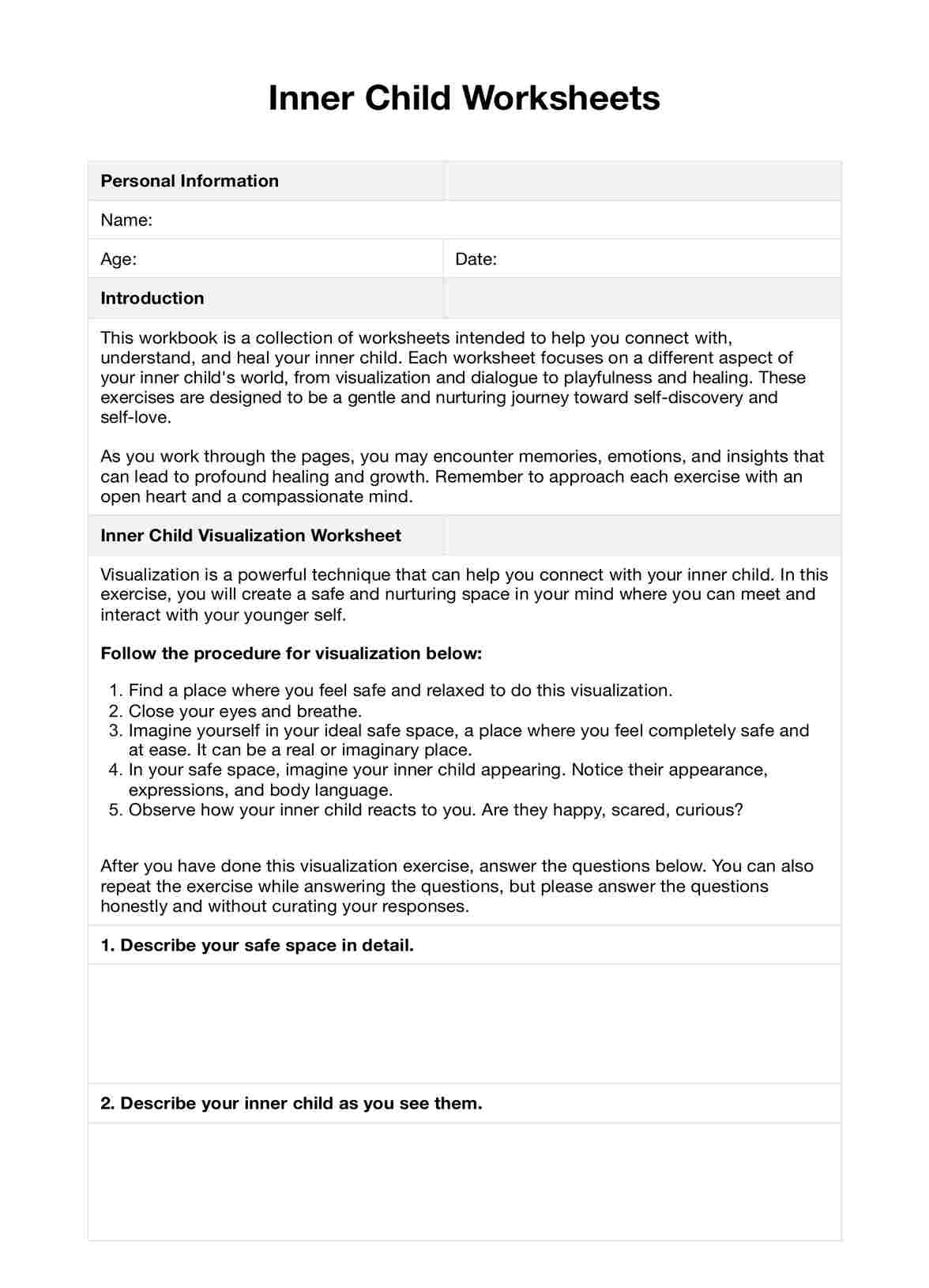Persistently feeling insecurity, unworthiness, or unresolved emotional pain from childhood, it may indicate that your inner child needs healing.

Inner Child Worksheets PDF
Try the transformative power of Inner Child Worksheets PDF. Heal past wounds, foster self-discovery, and embrace authenticity with our guide and template.
Use Template
Inner Child Worksheets PDF Template
Commonly asked questions
Healing your inner child is crucial for emotional well-being, as it addresses deep-seated issues from childhood that can affect your relationships, self-esteem, and overall happiness as an adult.
The healing process for the inner child varies depending on the individual and the extent of their childhood wounds. It can be a lifelong journey of self-discovery and growth.
EHR and practice management software
Get started for free
*No credit card required
Free
$0/usd
Unlimited clients
Telehealth
1GB of storage
Client portal text
Automated billing and online payments











